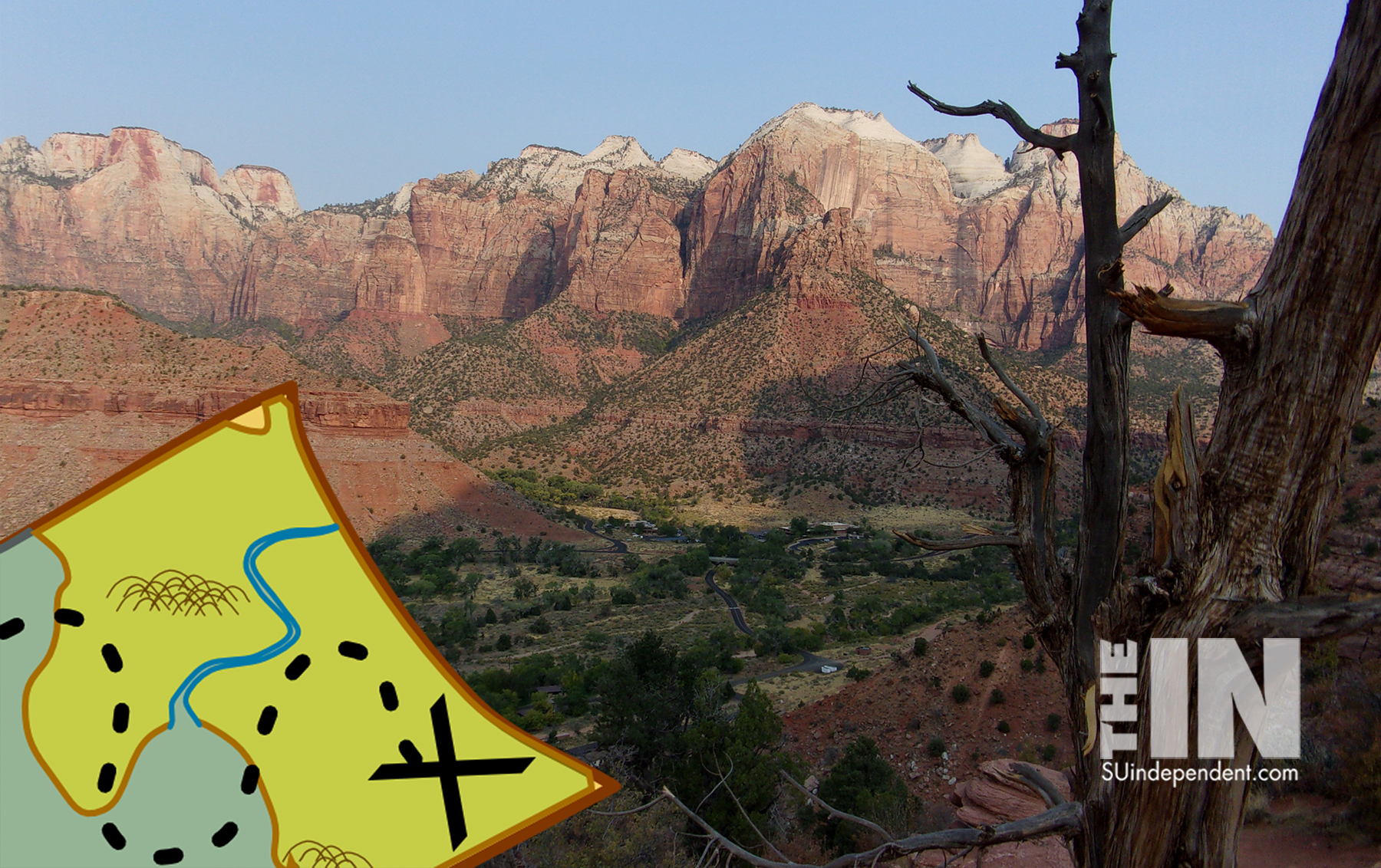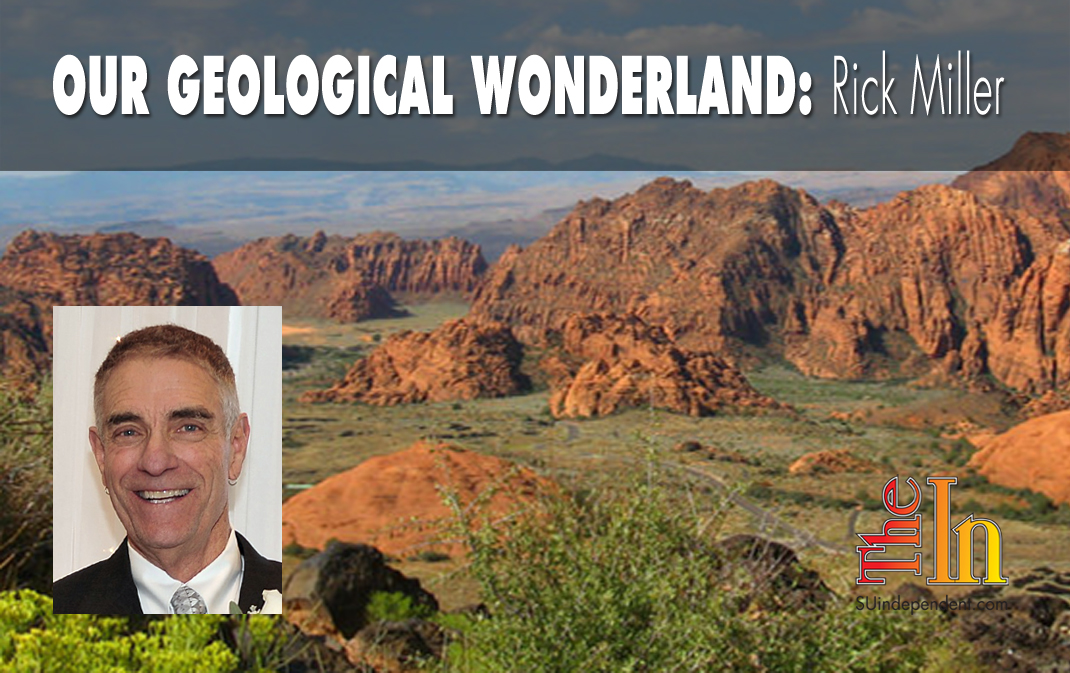 Our Geological Wonderland: Snow Canyon State Park
Our Geological Wonderland: Snow Canyon State Park
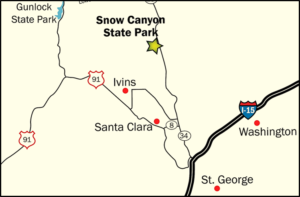
Located just northwest of St. George, Snow Canyon State Park offers visually outstanding views of red, white, and dark brown to black rocks and provides examples of a variety of interesting geological features within its 7,400 acres (Figure 1). The park is another geological wonderland in the St. George area and is part of the Red Cliffs Desert Reserve. Originally named Dixie Park, it was renamed for two early Utah pioneer leaders named Erastus and Lorenzo Snow. The park was established in 1959 and opened to the public in 1962. Previous history includes Indian tribes who inhabited the region from about 200 C.E. until the mid-1800s.
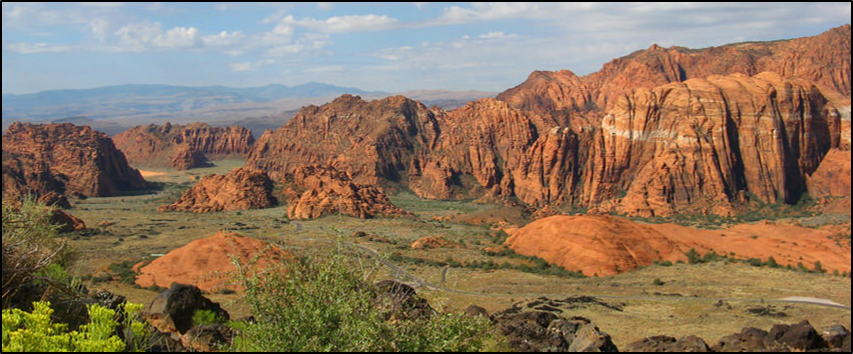
As noted in a previous article, the rocks of Snow Canyon also represent a portion of a very widespread sand sea, Navajo erg, which existed in this region in early Jurassic time, about 190 million years ago (Figures 2 and 3). These rocks consist primarily of fine-grained sand-sized particles, and these grains are mostly quartz (SiO2). If you happen to have a handheld magnifying lens, take a close look at a clean sandstone surface and you will see the tiny quartz grains; rub your finger over the surface and you will notice that the rock feels like medium-coarse sandpaper.
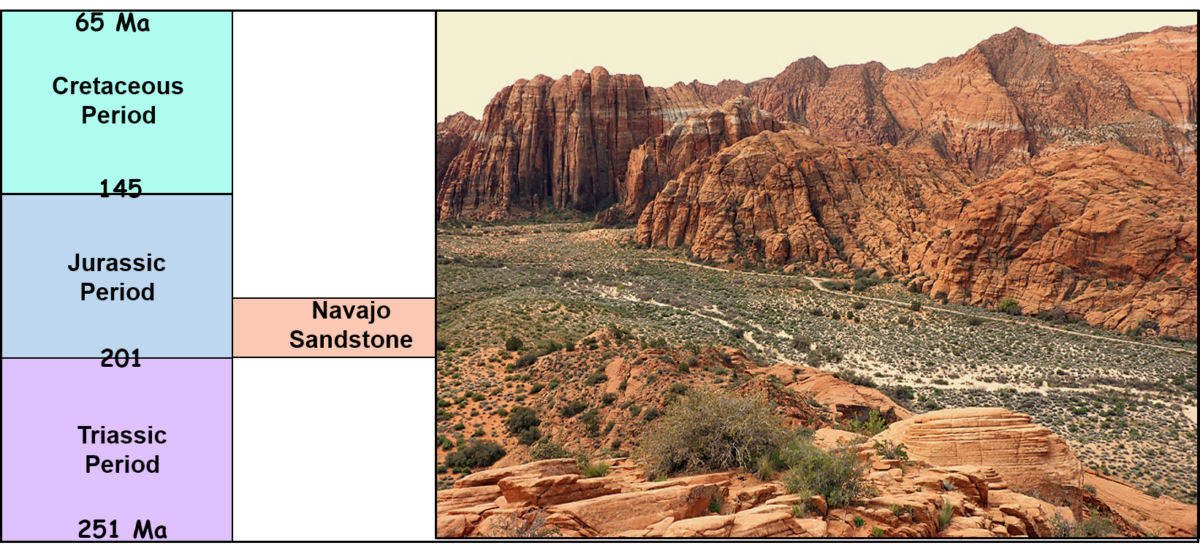
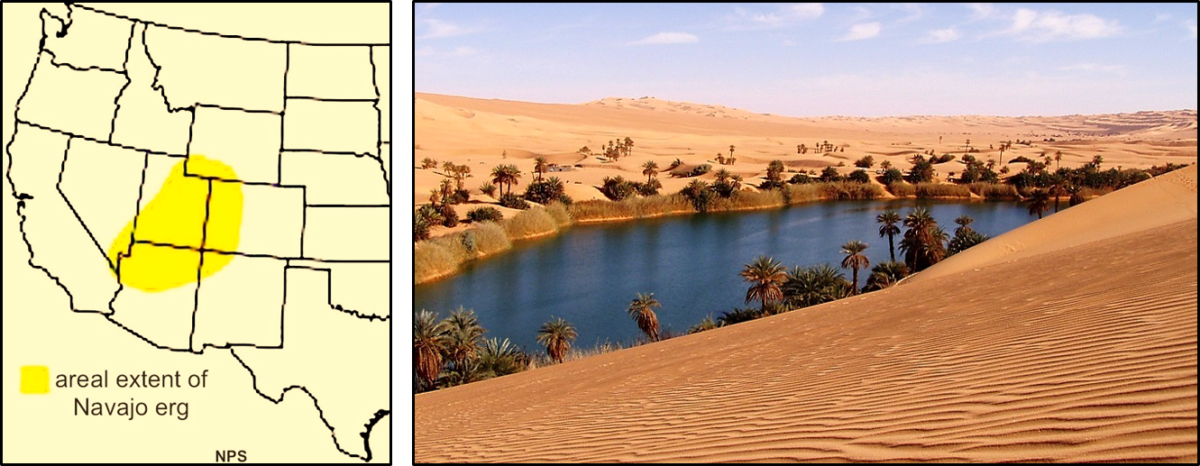
A characteristic feature of the interior of modern-day sand dunes such as those of the Sahara Desert is known as cross bedding (or cross stratification). Not surprisingly, the Navajo Sandstone displays abundant cross-bedding, and this provides one bit of evidence indicating they represent ancient sand dunes (Figure 4).

Another feature common in the Navajo rocks are vertical lines which are called joints (Figure 5). These joints are literally cracks in the rock and form as a result of expansion of the rocks at the surface, resulting from the release of high pressure on these rocks when they were buried. The joints are accentuated because water seeps in to them, so weathering and erosion of the sandstone along the joints is more rapid than in the surrounding rock.
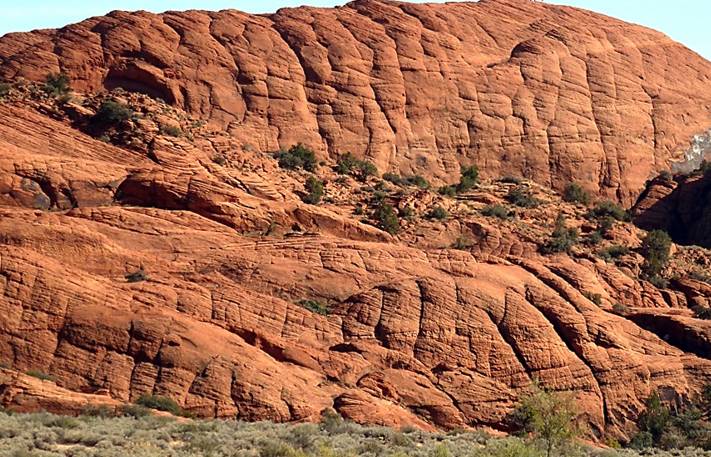
Within the park as well as in the surrounding areas of Washington County are dark brown to black weathering volcanic basalt lava flows (Figure 6). These flows can be seen in lower parts of the canyon and also on ridges where they occur overlying the sandstone. Most of these flows formed between about 2.4 million to 30,000 years ago. A distinctive feature in some flows are lava tubes and tunnels, some of which are large enough to enter and explore (Figures 6 and 7).

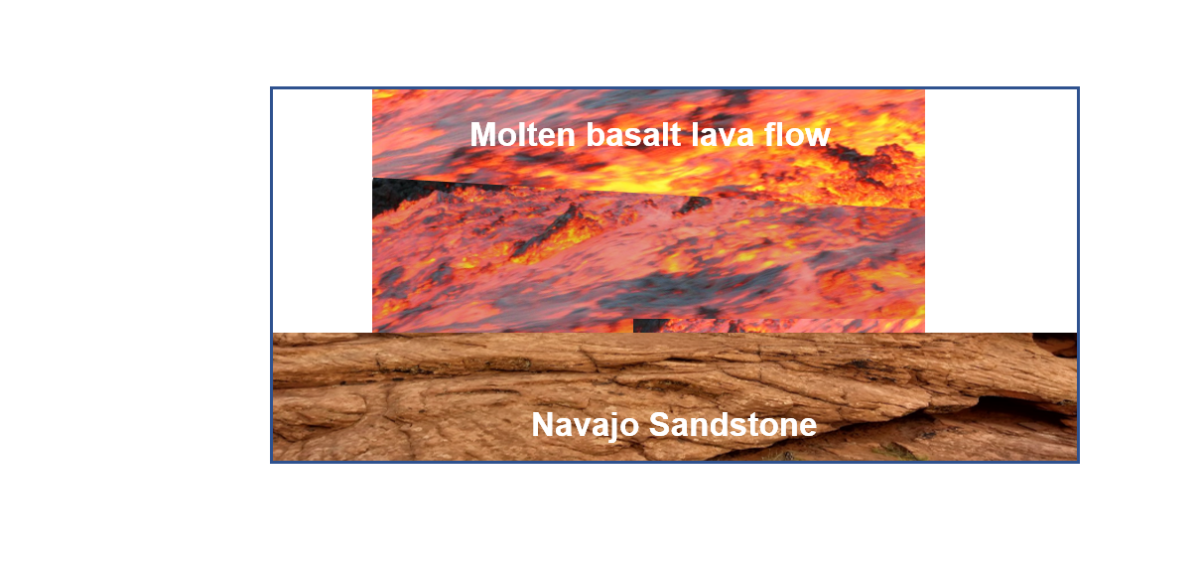
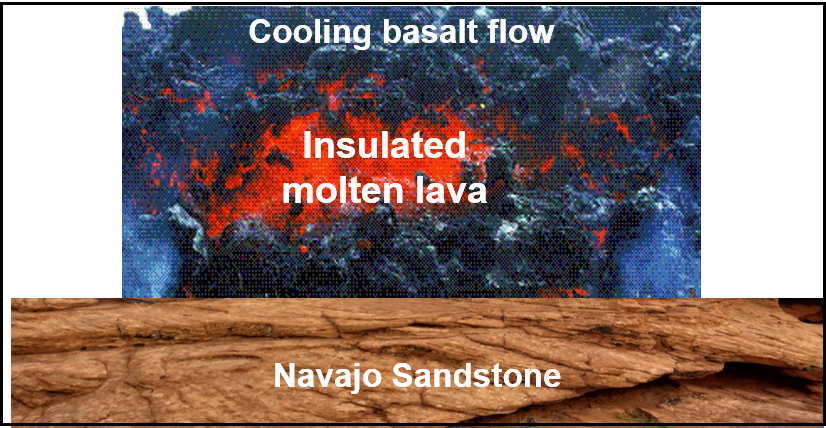
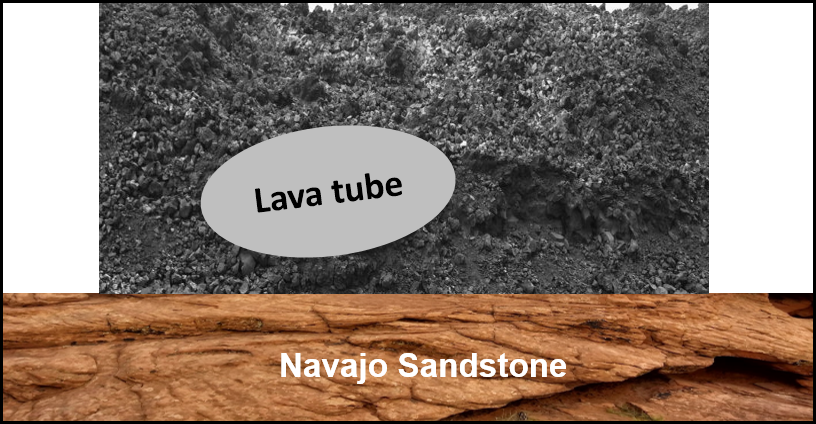
Another feature found in Snow Canyon and other areas where the Navajo Sandstone is exposed to weathering and erosion are small, somewhat spherical rocks with a dark reddish-brown color. These rocks are known as Moqui (Moki) marbles (Figure 8). They consist of the iron oxide mineral hematite (Fe2O3), which forms around a sandstone core as a mineral precipitation from groundwater. The marbles-to-be form as small concretions within the sandstone. When the sandstone weathers and is eroded, the more resistant spherical hematite concretions accumulate on the surface. In folklore and New Age circles, Moqui marbles are called shaman stones, and they are considered to have various types of healing properties.
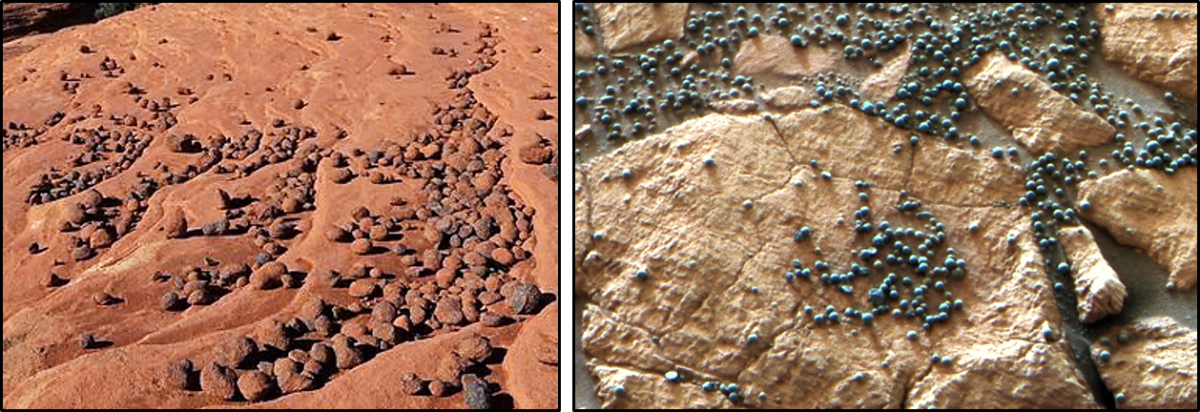
Two things to note from Figure 8. First is the size difference. Moqui marbles range from marble-sized to golf-ball-sized and sometimes even larger, whereas Martian blueberries are mostly the size of a BB. Second, and more thought provoking, is that although the blueberries appear blue in the image, they are actually reddish-brown as are the Moqui marbles. The mineral they are composed of is hematite, which is an iron oxide mineral (Fe2O3). In order to form this mineral by oxidation, both water and oxygen gas must be present. There is abundant evidence for water on Mars, but where and how did the oxygen form?
A characteristic feature in most arid and semi-arid climates is a discoloration on rock surfaces. It appears as a dark brown to black coating and is very thin, perhaps one micron thick. This coating is called desert varnish (Figure 9). This coating is found on a variety of rock surfaces. A current hypothesis is that its formation begins with wind-deposited clay minerals, which may then trap other chemicals or minerals during intermittent rain or from other moisture. The process may also be initiated by microbes. The dark color is due to presence of manganese.
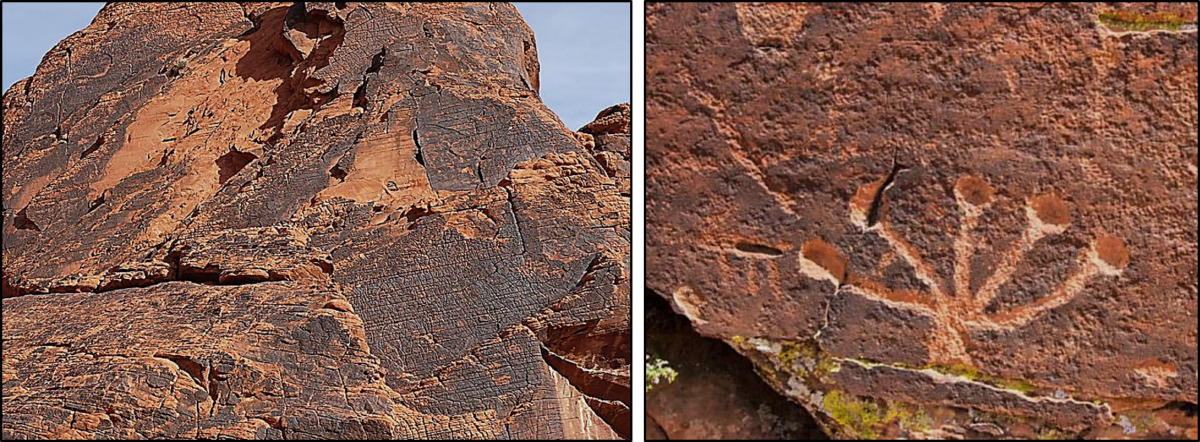
Another interesting feature that can be seen in the canyon walls is a color change within the Navajo Sandstone. Most commonly, the rocks are various shades of red, but there are areas where they are white (Figure 10). There does not seem to be an obvious pattern to this color variation as the change is irregularly distributed throughout the canyon. A number of proposals have been suggested to explain the differences. Presently, the most likely hypothesis is that the white areas of sandstone are the result of iron being leached out of the red rocks by warm to hot ground water resulting from the heat generated by the recent volcanic eruptions in the area.
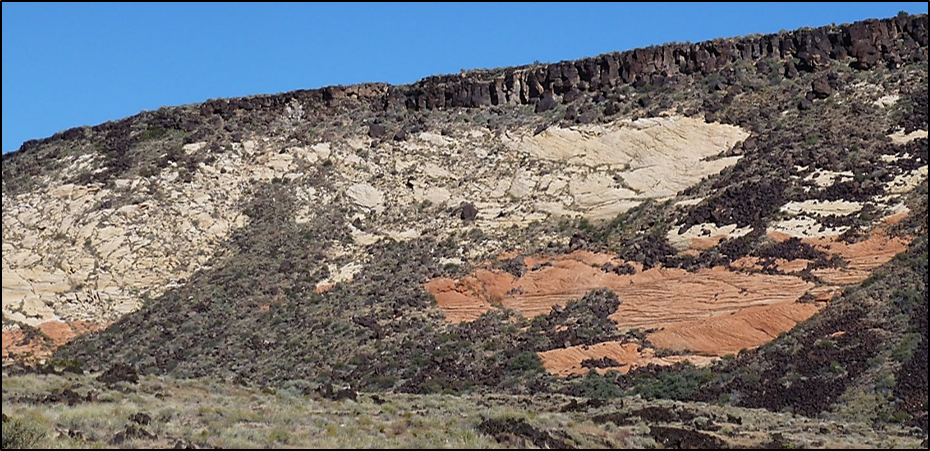
Scenic Snow Canyon lies within the Red Cliffs Desert Reserve, a 62,000-acre wildlife reserve in Washington County. The reserve was established in 1996 in partnership with a number of state and federal agencies. The visitor center for the reserve is in St. George at 10 N 100 E, and it provides information about the reserve. It’s free and well worth a visit!
Basic information about facilities and activities available in Snow Canyon is available here.
Articles related to “Our Geological Wonderland: Snow Canyon State Park”
The famous inverted topography of basalt lava ridges of St. George
http://suindependent.com/category/features-southern-utah/st-george-geology-rick-miller/
Our Geological Wonderland: The Pine Valley Mountain Laccolith



